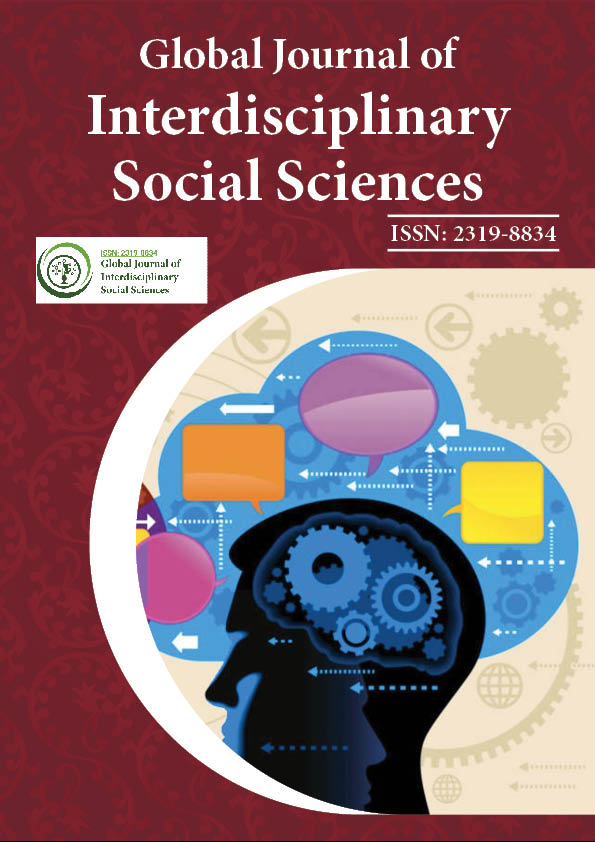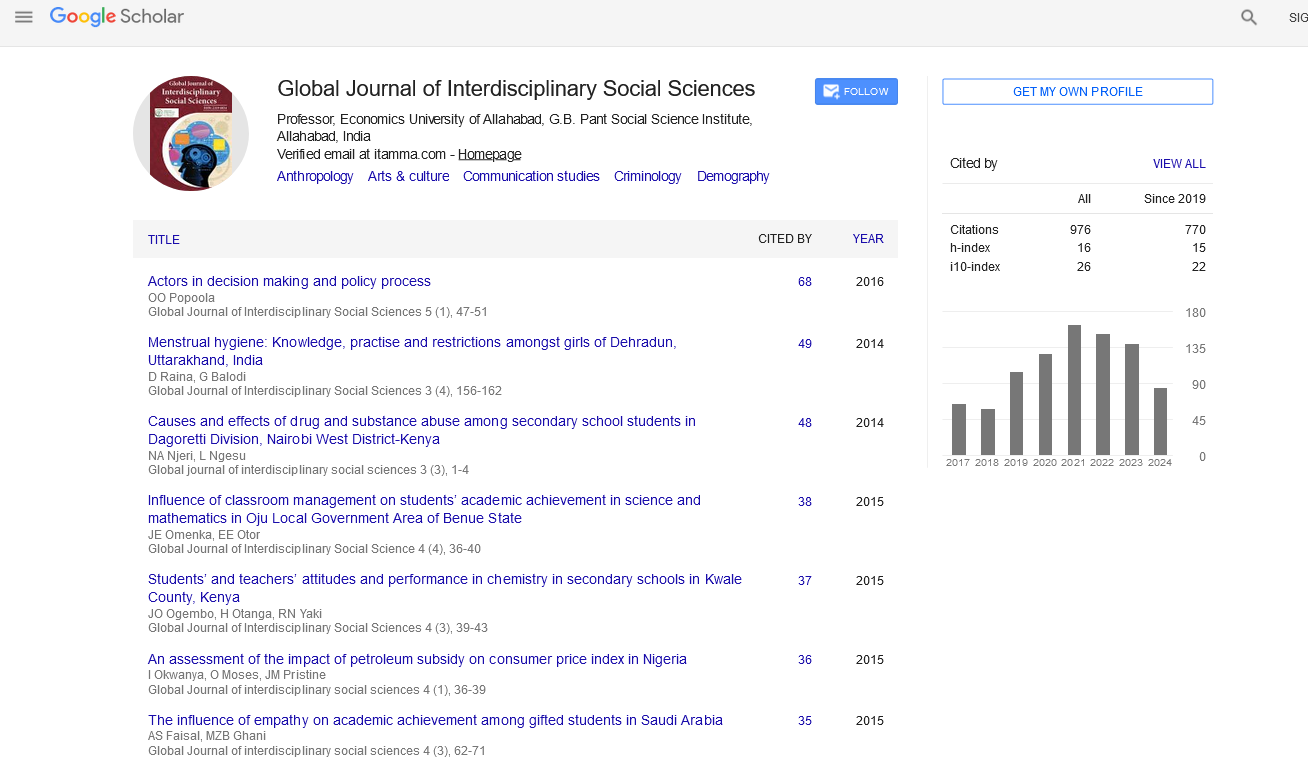Indexed In
- JournalTOCs
- Google Scholar
Useful Links
Share This Page
Journal Flyer

Open Access Journals
- Agri and Aquaculture
- Biochemistry
- Bioinformatics & Systems Biology
- Business & Management
- Chemistry
- Clinical Sciences
- Engineering
- Food & Nutrition
- General Science
- Genetics & Molecular Biology
- Immunology & Microbiology
- Medical Sciences
- Neuroscience & Psychology
- Nursing & Health Care
- Pharmaceutical Sciences
Perspective - (2022) Volume 11, Issue 4
Systematic Control on Water Scarcity in India
Sonal Kapoor*Received: 04-Jul-2022, Manuscript No. GJISS-22-17841; Editor assigned: 07-Jul-2022, Pre QC No. GJISS-22-17841(PQ); Reviewed: 22-Jul-2022, QC No. GJISS-22-17841; Revised: 29-Jul-2022, Manuscript No. GJISS-22-17841(R); Published: 08-Aug-2022, DOI: 10.35248/2319-8834.22.11.025
Description
Water scarcity is one of the greatest demanding situations of the twenty-first century. Overpopulation, agriculture, pollution of water and improper authority rules are the vital reasons for water shortage. FAO suggested agriculture, encompassing crops, livestock, fisheries, aquaculture, and forestry. It accounts for an expected 70 percent of global water withdrawals, while competition with different sectors for water is increasing. Climate change also affects freshwater sources negatively, in terms of both quantity and quality. Particularly the demand for water in India is steeply growing due to numerous reasons, which include urbanization, industrialization, more water for agriculture production and vigorous population growth.
The world’s population is growing at a rate of eighty million human beings every year. This means that every year we need to find a way to add approximately sixty four billion cubic meters of water to the global water supply, India is the second-most populous country in the world, with more than 1 billion citizens. Roughly half of India’s population, a staggering 569 million, practice open defecation. In the year 2030, India will be most populous country. There are millions of people all over the world who don’t have access to water, or, if they have access, that water is unable to be used. About 70% of the Earth’s surface is covered with water and 3% of it is fresh water that is useful for human purpose. Water pollution is a huge problem, especially when you’re looking at areas that don’t necessarily have a good sewage system. Pollution can be anything from oil, to carcasses, to chemicals, and to fecal matter. Water pollution affects the complete biosphere plant life and organisms living in these water bodies. Water pollution is a prime international problem which requires ongoing assessment and revision of water resource policy at all levels. In view of population increase, the demand for freshwater for all the uses may be unmanageable. According to the status of water quality in India (2011), it is expected that the projected wastewater from urban centres may also move 1,00,000 mld (millions of litter per day) through 2050 and rural India will also generate not less than 50,000 mld in view of water supply designs for community supplies in rural areas.
Conclusion
Eighty percent of groundwater is going to irrigation and agricultural purposes. While agriculture is one of our countries most significant water users some modern solutions have been developed to enhance water use efficiency and preserve or even increase yields. Water was used by agriculture in numerous formats. In the destiny, the call for meals is exceptionally predicted, with an instantaneous impact on agricultural water usage. In addition, because of the increased water scarcity and drought because of weather change large water use for irrigation is expected to occur in the context of growing competition among agriculture and different sectors of the economy. In order to deal with future estimates of water shortages, some measures aimed toward streamlining and optimizing the efficiency of water consumption in the agricultural sector are important in view of the large volumes of water required for the production of crops. Irrigation is used to replace losses due to crop evapotranspiration and to obtain full production under the given enlarging environment.
Citation: Kapoor S (2022) Systematic Control on Water Scarcity in India. Global J Interdiscipl Soc Sci. 11:025.
Copyright: © 2022 Kapoor S. This is an open-access article distributed under the terms of the Creative Commons Attribution License, which permits unrestricted use, distribution, and reproduction in any medium, provided the original author and source are credited.

